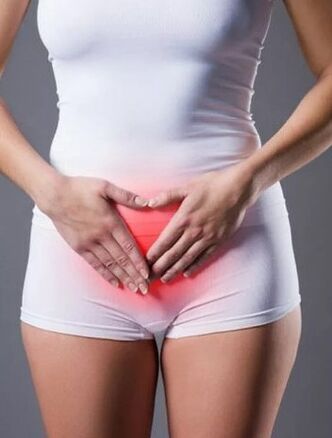Cystitis is an inflammatory process located in the bladder. Together with it, the inflammation of the urethra develops or urethritis.
The characteristics of the cystitis are:
- The residual feeling of burning and rubber in the end and immediately after the act of urination
- Painful urination
- Pain syndrome located in the lower abdomen and in the lumbar region
- The incontinence of the urine is possible
- Urine color change (bloody or muddy)
- Increase in body temperature up to fever
- Deterioration of the general good.
The causes of the disease
The factors that cause cystitis are needed:

Infectious factor:
- It is represented by an E. coli, streptococci and/or staphylococci, in view of the narrow position of the anus and urethra (in women);
- Sexual infections (ureaplasma and micoplasma);
- Instrumental intervention or introduction of infection in the urethra or bladder (most often microorganisms with gram-negative cell wall);
- Mushrooms, chlamydia, viruses;
- Inflammation in the parental organ -urinary of a man (seed bubbles, appendages of the testicles, etc. );
- Tumor formations;
- Anatomical deviations;
- Allergy to care products (vaginal deodorants, colored toilet paper, talc, all types of perfume soap);
- Rare urination (characteristic of the elderly).
Diagnostics
The following laboratory methods are used to diagnose the disease:
- A blood test (general) shows changes, among which there is a moderate inflammatory process
- The analysis of the urine (general) shows color changes due to the presence of uric acid, leukocytes, red blood cells, proteins and in some cases there is a fetid smell
- The analysis of the urine by Neciporenko allows you to study the organs of the parenting system and their conditions by calculating the number of leukocytes, red blood cells and cylinders in the urine. The results of the study are influenced by the correctness of the material of the material and the compliance of the patient with the rules of personal hygiene.
- The pathogenic microflora can be detected with a greater amount of nitrates in the urine, detected using an indicator strip
- The presence of PUS in the urine is detected through a reaction of east leukocytes.
In addition to the laboratory diagnostics for the detection of cystitis, instrumental methods are performed, the most common are cytoscapes, biopsy, ultrasound, diagnosis of STD/STpp and others.
Complications
With a non -root nature of the treatment, cystitis cannot only go to a chronic form, but also to complicate with diseases such as:
- A state in which renal function is disturbed: the volume of the urine issued is reduced
Inflammation extends to the mucous membrane and the muscle layer of the kidney, which is replaced by a result of the cicatricial tissue, which leads to a decrease in the size of the kidney and the elasticity of its capsule.
PMR - Damage to the valves structures, due to which the urine is revealed to the outflow, again in the kidney. At the same time, the location of the infection in the urinary system is preserved and the chronic form of Pylonefritis, renal tissue scars and a complete compromised renal operation occur.
Disease treatment
The therapy of the disease is based on the elimination of microbial inflammation, the main cause of cystitis, which often occurs due to a weakened immune state. Therefore, the treatment of pathology involves the use of the following groups of drugs:
- Anti -inflammatory drugs (NSAIDs)
- Antibacterial drugs
- Immunomodulators.
Risk group
The risk group is a weakened immunity, infected with HIV and pregnancy.
Prevention
The cystitis prevention measures are needed:
- Lack of hypothermia
- Examination of a gynecologist every six months for STD/SPPP
- Rigorous observance of hygiene, especially during sexual contact
- Refusal of narrow underwear (Infranelli) and synthetic
- Take care of enough lubrication during intimacy
- Adequate diet
- Constipation prevention
- Strengthen immunity.
Diet and lifestyle
In the manifestation of signs of pathology, it is necessary to limit the use of solid foods, replace it with broth, yogurt, mashed potatoes and a large volume of liquid. After a decline in acute symptoms, a gradual introduction to solid food diet is allowed: wheat, nuts and legumes. A variety of freshly squeezed juices (both vegetable and fruit) are useful for the body.
When the fever should be observed, you should observe the rest in bed, compressed and hot baths should be used. You can eliminate stagnant phenomena using cold compresses.




























